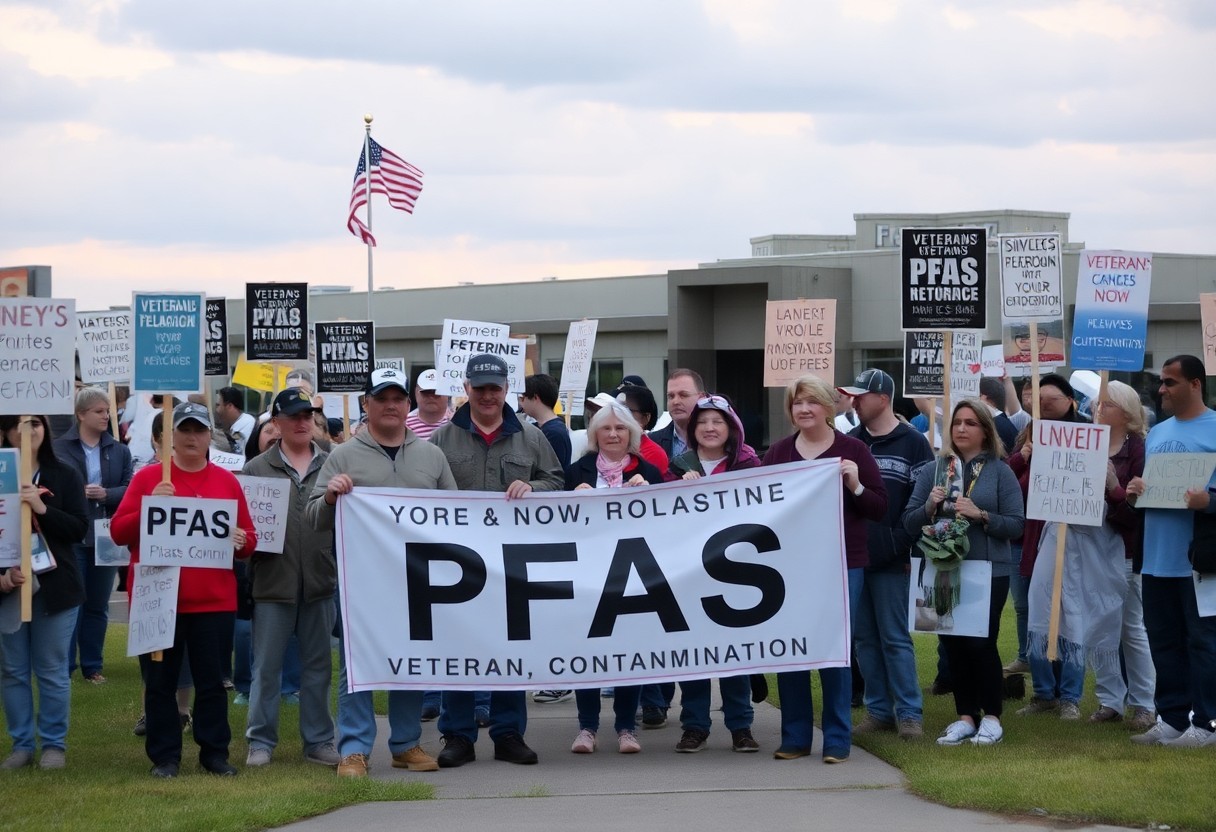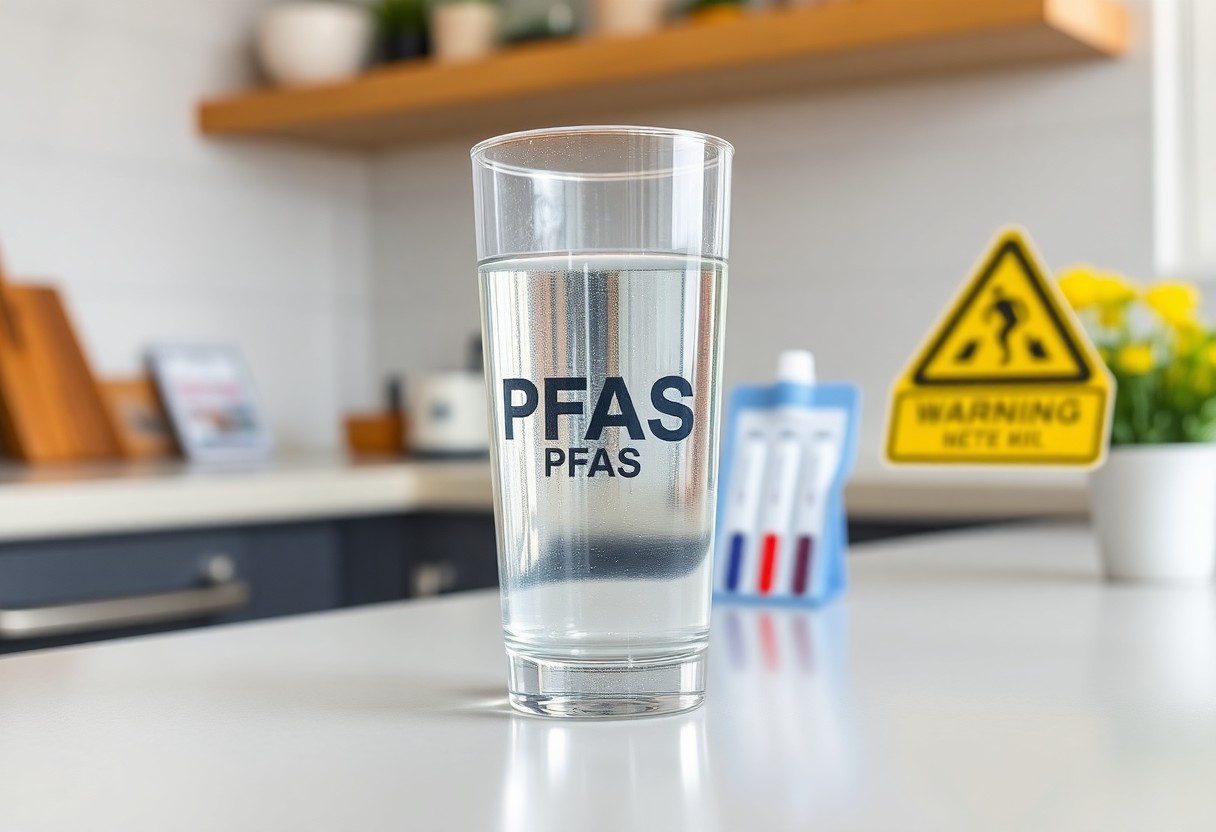You may be unaware that water utilities across the nation are taking legal action against manufacturers over PFAS contamination. This can significantly impact your water quality and possibly your health. PFAS, often called “forever chemicals,” can persist in the environment and accumulate in your body, posing serious health risks. As these lawsuits unfold, it’s important for you to understand how these developments could affect your community’s water supply, safety regulations, and the overall cost of your water services. Stay informed to safeguard your well-being and that of your loved ones.
Understanding PFAS
To comprehend the implications of PFAS issues, it’s crucial to understand what these chemicals are and their potential impacts on public health and the environment.
Definition and Types of PFAS
To grasp the significance of PFAS, you should know that they are a group of man-made chemicals used for various industrial applications. Here are some key points:
| Definition | PFAS stands for Per- and Polyfluoroalkyl Substances. |
| Types | Includes PFOA, PFOS, GenX, and others. |
| Uses | Commonly found in non-stick cookware, firefighting foam, and water-repellent fabrics. |
| Persistence | PFAS are known as “forever chemicals” due to their longevity in the environment. |
| Health Concerns | Linked to cancer, liver damage, and reproductive issues. |
Knowing about PFAS helps you understand the significance of current lawsuits and their potential effects on water quality.
Sources of PFAS Contamination
PFAS contaminants can originate from various sources that often impact your drinking water. Understanding these sources is important for recognizing potential risks.
Definition of PFAS contamination sources includes industrial discharges, wastewater treatment plants, and the application of contaminated firefighting foams. These substances can seep into the groundwater, leading to exposure in your community’s water supply. Additionally, consumer products such as non-stick cookware and water-repellent items are significant contributors. Awareness of these sources allows you to take proactive measures in safeguarding your health and that of your family.

The Role of Water Utilities
If you are concerned about the quality of your drinking water, it is imperative to understand the role of water utilities. These entities are responsible for providing safe and clean drinking water to your community, ensuring that it meets regulatory standards. However, as groundwater contamination from PFAS pollution rises, many utilities face increasing pressure and legal battles that might impact their ability to deliver safe water to you.
Responsibilities of Water Utilities
Responsibilities of water utilities extend beyond just distributing water; they involve monitoring and treating water to eliminate contaminants while complying with federal and state regulations. Your water utility must regularly test water sources and ensure that any detected pollutants, including PFAS, are managed effectively, providing you with the assurance that your drinking water is safe.
Navigating Legal Challenges
About navigating legal challenges, many water utilities are currently facing lawsuits due to rising concerns over PFAS contamination. These legal issues not only threaten the finances of your local utility but could also affect the quality and reliability of your water service. You may experience changes in rates or service as utilities allocate resources to handle these ongoing legal disputes.
Utilities are grappling with the financial burden of litigation and operational changes related to PFAS. As they navigate these challenges, there may be adjustments in your water service or increases in costs to cover legal fees and potential remediation efforts. This situation highlights the importance of being informed about your local water utility’s status, as these developments may directly impact your access to clean water and your water bills.
Legal Actions and Implications
Assuming you are concerned about the implications of PFAS contamination, it is crucial to understand that legal actions by water utilities may impact both the utilities’ finances and your water rates. These lawsuits are surfacing as utilities seek to hold manufacturers accountable for the costs associated with water treatment and contamination mitigation. As a customer, you may experience indirect effects through potential fee increases or changes in your water service.
Overview of Current Lawsuits
Above all, several water utilities across the country are currently engaging in lawsuits against chemical manufacturers and industries linked to PFAS contamination. These cases revolve around claiming reimbursement for costs incurred in testing, treatment, and remedying contaminated water sources. As these legal battles unfold, the outcomes can significantly influence the future landscape of water safety and public health.
Potential Outcomes for Water Utilities
For water utilities, the potential outcomes of these lawsuits could lead to substantial financial ramifications and shifts in operational practices. If utilities succeed in their claims, they may recover costs associated with remediation efforts, which could alleviate the financial burden on you. However, if they lose, it could result in even more financial strain, ultimately impacting your water service stability and rates.
With litigation outcomes hanging in the balance, water utilities face multiple challenges that could affect your water service directly. If they win their cases, utilities could receive substantial compensation to manage and remediate PFAS issues, which might prevent significant rate increases for customers like you. Conversely, a legal loss could lead to increased operating costs that might be passed on to consumers through higher water bills. Additionally, protracted legal battles can delay critical funding and improvements necessary for ensuring safe drinking water, which could harm public health and safety. Understanding these outcomes helps you anticipate changes that could affect your family’s water quality and your wallet.
Impact on Consumers
For many consumers, the lawsuits against water utilities over PFAS contamination could lead to significant changes in your water supply and bills. With increased attention to water safety, you may find yourself facing higher utility costs as local agencies invest in purification technologies or treatment facilities to meet regulatory standards. It’s necessary to stay informed about the outcomes of these cases, as they could directly impact the quality of water you receive and how much you pay for it.
Water Quality and Safety Concerns
Above all, the concern about PFAS contamination raises serious questions about the quality and safety of your drinking water. As lawsuits progress, there’s a potential for increased scrutiny on water sources and treatment processes. You must be aware that changes stemming from these legal actions could affect the measures in place that ensure your tap water remains clean and safe for consumption.
Financial Implications for Households
By pursuing lawsuits, water utilities may pass on the costs of litigation and remediation to consumers, resulting in higher water bills. It’s important to evaluate how these changes might influence your household budget, as you may need to adjust your expenses accordingly.
Water utilities facing the financial burden of PFAS lawsuits will likely increase rates to cover remediation efforts or legal fees, directly impacting your household budget. This means you could be paying more for water that has gone through extensive treatment processes to ensure its safety. Additionally, if local utilities invest in costly treatment technologies, you may also see rising taxes or fees as municipalities seek to fund these improvements. To mitigate the financial strain, you should consider monitoring your utility bills and advocating for transparency in how these changes affect your community and finances.
Regulatory Responses
Many states and local governments are stepping up to address PFAS contamination through new regulations and guidelines. These regulatory measures aim to protect public health by limiting PFAS levels in drinking water and requiring utilities to monitor and report contamination. As regulations evolve, it’s important for you to stay informed about how these changes may affect your water supply and overall safety.
Government Actions and Regulations
Around the country, government agencies are implementing stricter standards for PFAS in drinking water. The U.S. Environmental Protection Agency (EPA) has begun taking actions that involve setting limits on PFAS levels, which could lead to mandatory testing and reporting by water utilities. These moves are designed to safeguard your health and ensure that utility companies provide safe and clean water.
Future of PFAS Management
Alongside ongoing governmental efforts, the future of PFAS management looks to include innovative treatment technologies and extended regulatory frameworks. As public awareness grows, you can expect more investment in research aimed at developing effective solutions to mitigate PFAS pollution in the environment.
Also, leading experts are advocating for a comprehensive strategy to tackle PFAS, which includes not only treatment technologies but also public education and industry collaboration. You may see increased funding and resources directed toward improving water quality and addressing historical contamination. By understanding these ongoing efforts, you can better advocate for your community’s health and participate in initiatives aimed at reducing PFAS impacts.
Advocacy and Public Awareness
Unlike many environmental issues, the controversy surrounding PFAS has garnered significant attention, leading to heightened public awareness and advocacy efforts. As a consumer of water, it is necessary for you to stay informed about PFAS and its implications for your health and local communities. Engaging with community initiatives and public discussions helps in advocating for safer water standards and regulatory measures.
Role of Communities and Advocacy Groups
By collaborating with local advocacy groups, you can amplify your voice regarding PFAS contamination in your water supply. These organizations often work tirelessly to share vital information and push for enhanced regulations that protect your health and the environment. Your involvement can help drive change and support efforts to remediate contaminated sources.
Educating the Public on PFAS Issues
Educating you about PFAS issues is necessary, as knowledge empowers action. Advocacy groups aim to provide comprehensive resources that explain the dangers linked to these chemicals and their presence in drinking water. By understanding PFAS and its potential health hazards, you become a more informed member of your community, capable of pressing for transparency and accountability from water utilities.
Another way to engage is by participating in local workshops, town hall meetings, or online forums. Sharing information about how PFAS contamination affects water quality and public health can illuminate the seriousness of the issue to those around you. Collaborative community efforts can lead to significant changes in policy and regulation, ensuring that safer water measures are put into place. Ultimately, your awareness and proactive efforts are vital to combating the PFAS crisis in your community.
Summing up
Upon reflecting, the ongoing lawsuits by water utilities against PFAS manufacturers highlight a significant public health concern that directly impacts you. As these utilities strive to hold companies accountable for contamination, the implications for your water quality, health, and potential financial implications of increased rates become more visible. Staying informed about these developments allows you to better understand your rights and advocate for safer water standards, ensuring that you and your community are protected from harmful chemicals in your drinking water.



















